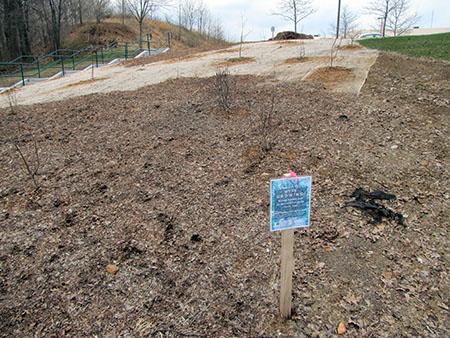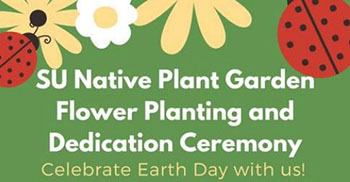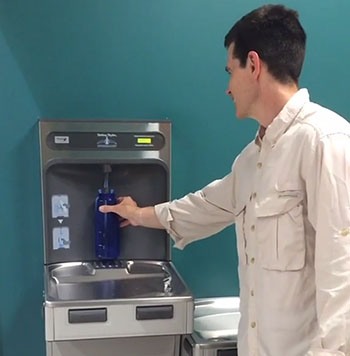To celebrate Earth Month, students will help the Center for Environmental Stewardship (CES) plant about 250 plants in the SU Native Plant Garden, a new addition to campus, from 12-3 p.m. on April 20. A dedication ceremony will be held immediately after at 3 p.m.

The plant garden is located beside the Dell Family Pathway on Owings Mills North next to the steps leading toward the parking lot.
Diamon Clark, Chesapeake Bay Conservation Corps volunteer and Stevenson alumna class of ’16, helps students with service-learning projects, organizes spring service projects, conducts field research and more. While she was a student in an Environmental Ethics service course, her group came up with the idea for a native plant garden project.
“It’s our attempt to show students, faculty, and the university at large that having a native habitat can look beautiful in commercial landscaping and serve as a home for birds, insects, and other native elements that will help the surrounding environment,” said Clark. BGE gave them a Green grant for the project after Dr. Kimberly Tucker, associate professor of biology and director of the Center for Environmental Stewardship, wrote them about the project, hoping to turn the idea into reality.
The first installation was in October. Landscapers helped to keep the soil from eroding through netting, and the shrubs and larger trees they have planted have helped to combat this as well. The native plants being added will also help the soil in that area to remain stable.
“There’s a certain aesthetic people are used to, but native plants can also be beautiful and used more often,” said Tucker. Places such as the Irvine Nature Center, Stevenson’s neighbor, showcase the beauty of native plants throughout the different seasons. Tucker and Clark encourage students to go and see for themselves.
 The significance of the plant garden goes beyond just the way it looks; having this garden is saving the earth one plant at a time. Invasive and exotic species can take over areas, which can push out certain creatures.
The significance of the plant garden goes beyond just the way it looks; having this garden is saving the earth one plant at a time. Invasive and exotic species can take over areas, which can push out certain creatures.
“A lot of species we have rely on a particular native plant such as milkweed seeds; these are essential for the monarch butterfly population. If you have an invasive species like Japanese knot weed taking over, there will be no milk thistle, and as a result, no more monarch butterflies,” said Clark. The ecosystem is very complex and needs balance, she added.
Tucker puts it into the perspective of a honey bee: “A native bee flies looking for food in a patch of a non-native plant that has recently taken over. This plant may not have the right nutrients, causing problems for the pollinators. It’s like dessert for them, and pollinators are very important,” said Tucker.
The science department and the CES plan a variety of activities each year to celebrate Earth Month. One is the annual stream cleanup, which occurred on April 7. Many students came out and helped pick up trash and recorded data from their observations. Each year the work is different.

On April 29, the CES will help to host a “BioBlitz” at Patapsco State Park with a biology class. The CES is also readying for “Leave Steve Green,” the move-out initiative that seeks to keep the campus clean through recycling. Last year, there was a sustainability idea competition and students advocated for more water bottle-filling stations; as a result, several stations are now installed throughout campus.
Many volunteers are needed to help with the plant garden, so the CES asks that interested students bring their friends. Students, faculty, family, and friends are encouraged to wear comfortable clothes to help plant and should feel free to join in at any time and stay for the dedication ceremony. President Elliot Hirshman will also be in attendance. The rain date is May 4.

























































